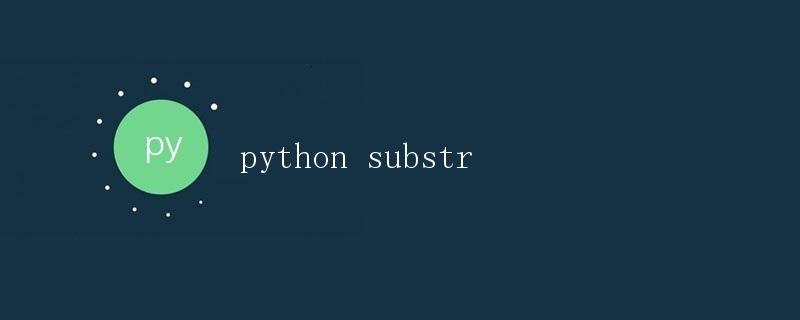Python中的子串操作

在Python中,字符串是一个非常常用的数据类型。我们经常需要对字符串进行各种操作,其中包括子串操作,即从原字符串中提取出指定范围的子串。
什么是子串
子串是指原字符串中的一部分连续字符序列。例如,对于字符串”hello world”,”hello”和”world”都是它的子串。
如何获取子串
在Python中,可以使用切片(slice)来获取子串。切片是通过指定起始索引和结束索引来截取原字符串的一部分。语法如下:
substring = string[start:end]
其中,start是子串的起始索引(包含),end是子串的结束索引(不包含)。如果不指定start,则默认为0;如果不指定end,则默认为字符串的长度。
下面是一些示例:
string = "hello world"
# 提取字符串的前5个字符
substring1 = string[:5]
print(substring1) # 输出: hello
# 提取字符串的第6个字符到最后
substring2 = string[6:]
print(substring2) # 输出: world
# 提取字符串的第2个到第8个字符
substring3 = string[1:8]
print(substring3) # 输出: ello wo
判断子串是否存在
有时候我们需要判断一个子串是否存在于一个字符串中。可以使用in关键字来实现。
string = "hello world"
substring = "hello"
if substring in string:
print("子串存在")
else:
print("子串不存在")
子串替换
我们还可以将一个子串在原字符串中替换为另一个子串。可以使用replace()方法来实现。
string = "hello world"
old_substring = "hello"
new_substring = "hi"
new_string = string.replace(old_substring, new_substring)
print(new_string) # 输出: hi world
子串查找
有时候我们需要查找一个子串在原字符串中的位置。可以使用index()方法或find()方法来实现。它们的区别在于,如果子串不存在,index()会抛出异常,而find()会返回-1。
string = "hello world"
substring = "world"
index = string.index(substring)
print(index) # 输出: 6
index = string.find(substring)
print(index) # 输出: 6
子串计数
我们可以统计一个子串在原字符串中出现的次数。可以使用count()方法来实现。
string = "hello world hello"
substring = "hello"
count = string.count(substring)
print(count) # 输出: 2
小结
通过本文的介绍,我们学习了如何在Python中进行子串操作。子串操作在字符串处理中是非常常见的,掌握这些操作可以让我们更灵活地处理字符串。
 极客教程
极客教程